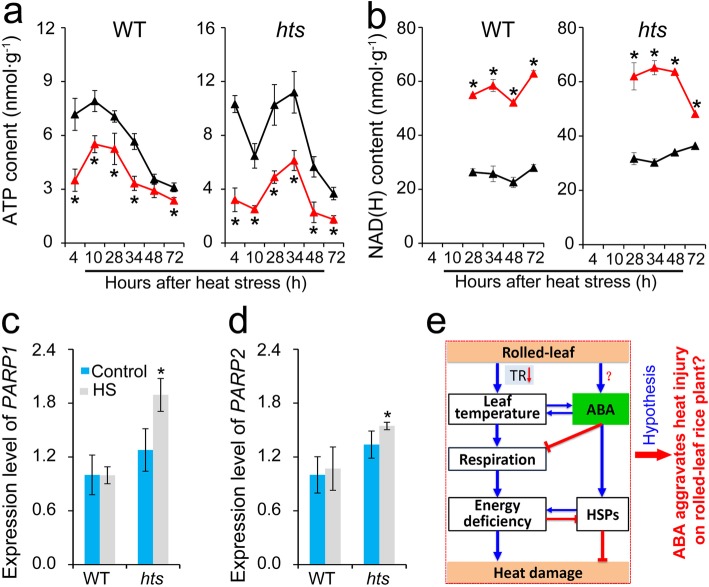Fig. 5.
Effect of heat stress on energy homeostasis in leaves of rice plants. a, ATP content;b, NAD (H) content; c, Relative expression level of PARP1; d, Relative expression level of PARP2; e, The possible function of ABA in rice plants with semi-rolled leaves under heat stress. Significantly higher tissue temperatures occurred in the rolled leaf rice plants (hts) under heat stress, which was mainly ascribed to lower heat dissipation ability. At the same time, ABA content increased in the rolled leaf plants, which, in turn, increased leaf temperature by reducing the stomatal conductance and transpiration rates. Such an effect could increase the respiration rate of leaves. Therefore, more carbohydrates were consumed, resulting in an energy deficit under heat stress, which caused damage to the rice plants with rolled leaves. Therefore, we inferred that higher ABA content accelerated heat injury in rice plants with rolled leaves. Vertical bars denote standard deviations (n = 3). A t-test was conducted to compare the difference between the control and heat stressed groups within a cultivar on the same day. * denotes P < 0.05

